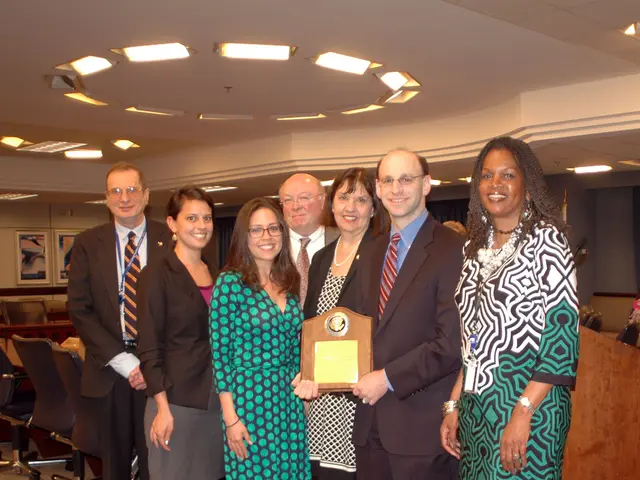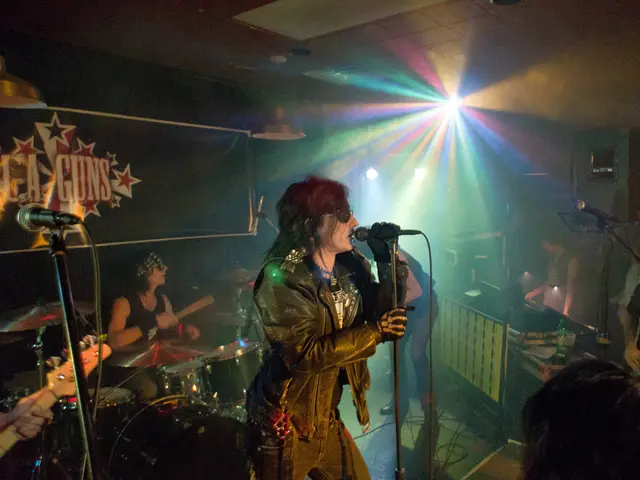Bias holds no sway in truth's revelation:
In the bustling Philippines today, it's no surprise to hear folks lobbing "biased" complaints at the media. Whether on social media, in chats over coffee, or even in official government rants, cries of media favoritism seem to be the order of the day. But do these claims truly hold water, or are we simply calling "bias" whenever something makes our skin crawl?
To put a pin in the media's "bias" label, it's worth taking a breather to truly understand what journalism entails. At its core, journalism is all about seeking the truth. It's about getting the facts straight, keeping the powerful on their toes, and ensuring the public stays in the know about matters that hit close to home.
Oftentimes, people view the press as a platform for spouting only sunshine or massaging egos for those in power. But that's not what journalism is about – it's about telling it like it is, even when it's uncomfortable. When journalists uncover corruption, rights abuses, or governance fiascos, they aren't being "biased" – they're doing their damn job!
Now, it's fair to acknowledge that most journalists, like the rest of us, are humans with their own opinions and inclinations. But responsible news outlets, to their credit, have ethical guidelines that ensure fairness and accuracy. Stories undergo rigorous fact-checking and editorial scrutiny. Mistakes, they say, are part and parcel of the job, but credible journalists own up to them. Go figure!
The real culprits aren't media bias, but selective news feeding and the spread of misinformation. Many of us only believe in news that tickles our fancies. If a report casts our favored hero in a negative light, we dismiss it as "fake news." And this narrow-minded outlook keeps us from seeing the whole picture.
Social media has only made things worse. Algorithms decide what we see, reinforcing our beliefs and creating echo chambers where we only encounter one side of the story. This makes it easier to dismiss legitimate journalism while embracing baseless narratives.
A free press is the backbone of any democracy. Without it, corruption thrives, and the truth becomes more elusive than a politician's campaign promise. Instead of accusing the media of being biased, we ought to broaden our horizons, fact-check like there's no tomorrow, and exercise some critical thinking.
At the end of the day, the problem isn't just media bias – it's our reluctance to accept perspectives outside of our comfort zone.
Selective news consumption and the spread of misinformation appear to be significant issues in the Philippines' media landscape, potentially drowning out concerns about media bias. Selective news consumption, driven by algorithms and personal preferences, tends to limit exposure to divergent viewpoints, causing individuals to be inundated with only information that supports their preconceived beliefs[1][2]. This problem is exacerbated by social media, where users are drawn to content that reinforces their beliefs, thereby fueling confirmation bias[2].
Disinformation is yet another major concern, as it can spread like wildfire over digital networks, including social media platforms. Lack of critical evaluation of online content can result in the dissemination of unfounded or deceptive news, thus fueling polarization of opinions[1][4].
In contrast, media bias remains a concern but may be less prominent compared to selective consumption and disinformation. The Philippines' diverse media landscape comprises multiple sources with varying viewpoints, which can help combat direct media bias. However, the conjunction of selective consumption and disinformation can amplify perceived biases, making it difficult to distinguish between genuine bias and the effects of these other factors[1][2].
In a nutshell, while media bias does exist, the prevalence of selective news consumption and disinformation might be more significant factors in the Philippines' current media environment.
Enrichment Sources:[1] Ferrer, M. D. (2019). The Philippines' Media Disinformation Challenge. Asia Policy. Retrieved from https://americancenterph.org/resource/the-philippines-media-disinformation-challenge/[2] Nayyar, A., Acidin, P. (2020). The Pandemic of Infodemic in the Philippines. International Journal of Communication, 14. Retrieved from http://ijoc.org/index.php/ijoc/article/view/12651[3] Moscoso, M. (2018, September 4). How Media Bias is a Fake News Shield for Duterte. Rappler. Retrieved from https://www.rappler.com/nation/235647-how-media-bias-fake-news-shield-duterte[4] De Pascale, N. (2019, February 20). Is the Philippines a Fake News Epidemic? Here’s the Story. Forbes. Retrieved from https://www.forbes.com/sites/nicholasdepascale/2019/02/20/is-the-philippines-a-fake-news-epidemic-heres-the-story/?sh=64c6a0c43e63
- The Philippines' media landscape is plagued by selective news consumption and the spread of misinformation, which might be more significant than concerns about media bias.
- Selective news consumption, driven by individual preferences and algorithms, limits exposure to divergent viewpoints and fuels a reluctance to accept perspectives outside of one's comfort zone.
- Disinformation can spread quickly over digital networks, including social media platforms, making it easier for unfounded or deceptive news to be disseminated and fuel polarization of opinions.
- In contrast, while media bias is a concern in the Philippines, the prevalence of selective news consumption and disinformation might amplify perceived biases, making it difficult to distinguish between genuine media bias and the effects of these other factors.










